Reducing Food Waste and Nourishing Communities: The Power of Gleaning Projects
go.ncsu.edu/readext?967881
en Español / em Português
El inglés es el idioma de control de esta página. En la medida en que haya algún conflicto entre la traducción al inglés y la traducción, el inglés prevalece.
Al hacer clic en el enlace de traducción se activa un servicio de traducción gratuito para convertir la página al español. Al igual que con cualquier traducción por Internet, la conversión no es sensible al contexto y puede que no traduzca el texto en su significado original. NC State Extension no garantiza la exactitud del texto traducido. Por favor, tenga en cuenta que algunas aplicaciones y/o servicios pueden no funcionar como se espera cuando se traducen.
Português
Inglês é o idioma de controle desta página. Na medida que haja algum conflito entre o texto original em Inglês e a tradução, o Inglês prevalece.
Ao clicar no link de tradução, um serviço gratuito de tradução será ativado para converter a página para o Português. Como em qualquer tradução pela internet, a conversão não é sensivel ao contexto e pode não ocorrer a tradução para o significado orginal. O serviço de Extensão da Carolina do Norte (NC State Extension) não garante a exatidão do texto traduzido. Por favor, observe que algumas funções ou serviços podem não funcionar como esperado após a tradução.
English
English is the controlling language of this page. To the extent there is any conflict between the English text and the translation, English controls.
Clicking on the translation link activates a free translation service to convert the page to Spanish. As with any Internet translation, the conversion is not context-sensitive and may not translate the text to its original meaning. NC State Extension does not guarantee the accuracy of the translated text. Please note that some applications and/or services may not function as expected when translated.
Collapse ▲
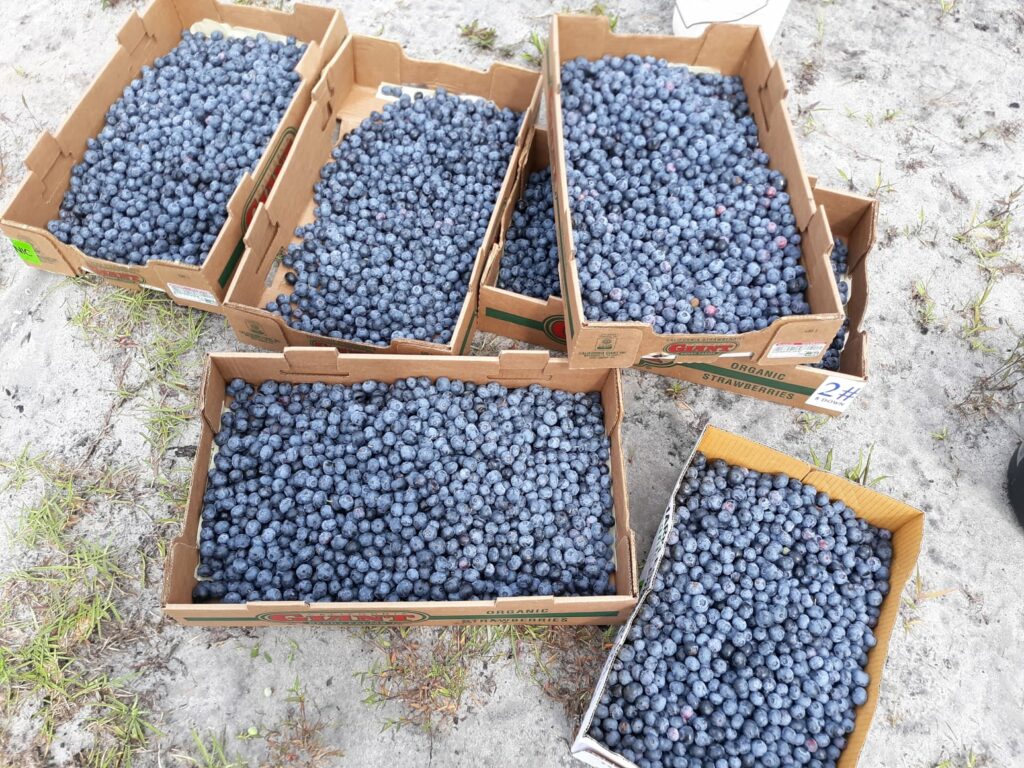 The EPA estimates that one-third of food produced in the US is wasted, and food waste makes up 24% of landfilled material. With over 45,000 farms in NC (NC Ag Statistics Highlights, USDA National Ag Stats Service), the practice of gleaning can help divert food waste on farms while also helping food insecure individuals have access to fresh, local produce. Gleaning projects are also great ways to work collaboratively among program areas in county offices, with campus faculty, and with community partners. “People often think of gleaning as an activity to feed households experiencing food insecurity, but it also benefits local and regional food and nutrition security overall, promotes community engagement, and helps people make connections with the people who grow and harvest our food as well as learning about farming practices, the food system and production, and food waste,” (Center for Ag & Food Systems, National Gleaning Project). Below are three examples of successful gleaning projects in North Carolina.
The EPA estimates that one-third of food produced in the US is wasted, and food waste makes up 24% of landfilled material. With over 45,000 farms in NC (NC Ag Statistics Highlights, USDA National Ag Stats Service), the practice of gleaning can help divert food waste on farms while also helping food insecure individuals have access to fresh, local produce. Gleaning projects are also great ways to work collaboratively among program areas in county offices, with campus faculty, and with community partners. “People often think of gleaning as an activity to feed households experiencing food insecurity, but it also benefits local and regional food and nutrition security overall, promotes community engagement, and helps people make connections with the people who grow and harvest our food as well as learning about farming practices, the food system and production, and food waste,” (Center for Ag & Food Systems, National Gleaning Project). Below are three examples of successful gleaning projects in North Carolina.
Agent: Amy Mead
Crop: Blueberries
Partners: NCCE staff from Brunswick, Pender, New Hanover, and Bladen Counties; 104 volunteers from Extension Master Gardeners, Extension Master Food Volunteers, 4-H members, FFA members, UNCW Environmental Services Department, and community members; NCSU Castle Hayne Horticulture Crops Research Station; Food Bank of Central & Eastern NC, Good Shepherd Center, and Iglesias Vision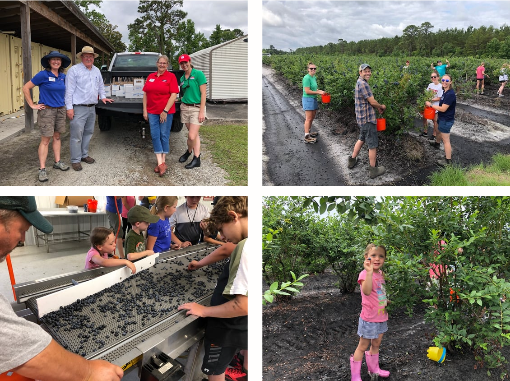 How did the initial project start: NCCE staff visited the NCSU Castle Hayne Horticultural Crops Research Station in New Hanover County where they learned that after initial harvest for research purposes, the fruit went to waste in the fields as it cannot be sold. With the knowledge of food waste and food insecurity, the team went to work looking for a way to get the berries to people in need.
How did the initial project start: NCCE staff visited the NCSU Castle Hayne Horticultural Crops Research Station in New Hanover County where they learned that after initial harvest for research purposes, the fruit went to waste in the fields as it cannot be sold. With the knowledge of food waste and food insecurity, the team went to work looking for a way to get the berries to people in need.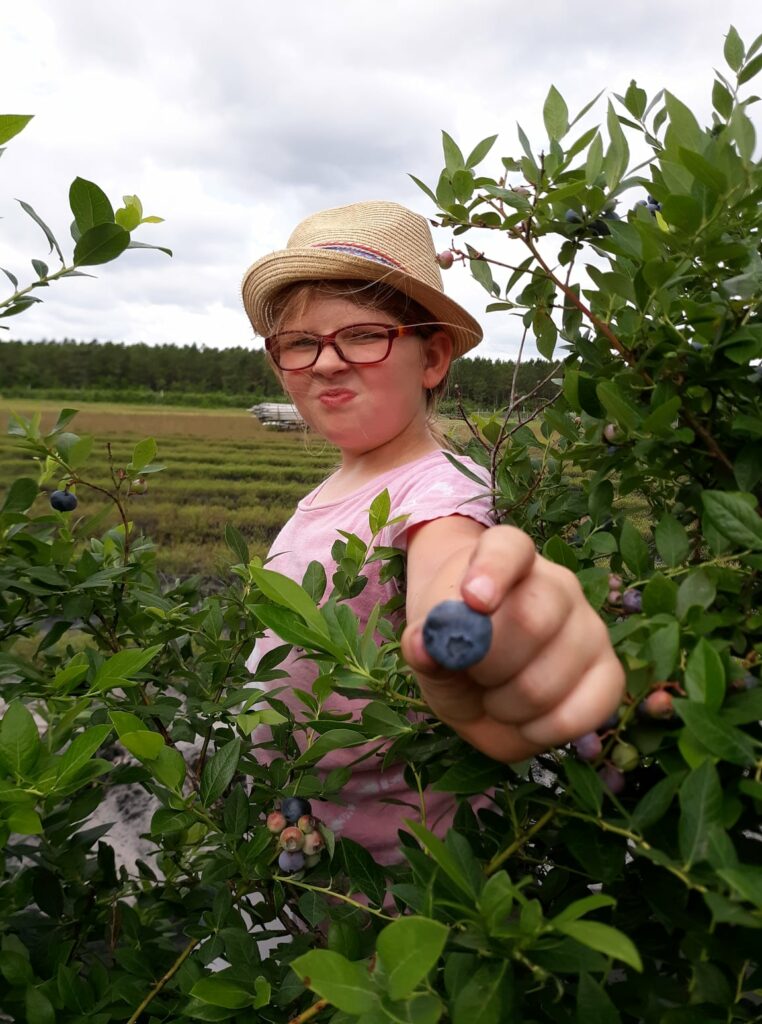 The Gleaning Impact: In 2022, staff and volunteers gathered twice at the research station to pick blueberries. In addition to gaining knowledge about blueberry varieties, research conducted at the research station, food access, and healthy eating, volunteers gleaned 770 pounds of blueberries that were donated to the Food Bank of Central & Eastern NC in Wilmington to be distributed to food insecure individuals. After the success in the first year, the group hosted a gleaning event again in 2023 where they harvested 450 pounds of blueberries and distributed them to the Good Shepherd Center of Wilmington and Iglesias Vision, a Spanish language faith-based organization/church.
The Gleaning Impact: In 2022, staff and volunteers gathered twice at the research station to pick blueberries. In addition to gaining knowledge about blueberry varieties, research conducted at the research station, food access, and healthy eating, volunteers gleaned 770 pounds of blueberries that were donated to the Food Bank of Central & Eastern NC in Wilmington to be distributed to food insecure individuals. After the success in the first year, the group hosted a gleaning event again in 2023 where they harvested 450 pounds of blueberries and distributed them to the Good Shepherd Center of Wilmington and Iglesias Vision, a Spanish language faith-based organization/church. Advice for other counties who may be interested in hosting their own gleaning event:
Advice for other counties who may be interested in hosting their own gleaning event:
“You’ll want to start by identifying the crops you’ll glean. This may mean partnering with an Ag Research Station or creating a relationship with a farmer. Determine where the food will be going once you’ve identified what you’ll be gleaning. Our Food Bank is very large and will take whatever donation we bring, but you’ll want to confirm when you can drop off, how much they’ll take, and how they want it boxed/packaged.
Start small with one gleaning date to work out the logistics of your event. I use Eventbrite to have volunteers sign up for the event. It’s a good way to communicate with volunteers and an easy way to report numbers. It is a popular event because it is a good cause and volunteers like that we allow them to take blueberries home after we have collected for the donation. We usually get about 50 volunteers per gleaning.
I’d also say be sure to invite all of your Extension colleagues and put them to work assisting with volunteer management at the event. It’s a wonderful day to work outside with your coworkers and this event truly spans all program areas.”
–Amy Mead, Natural Resources and Environmental Education Area Agent, Brunswick, New Hanover, and Pender County Centers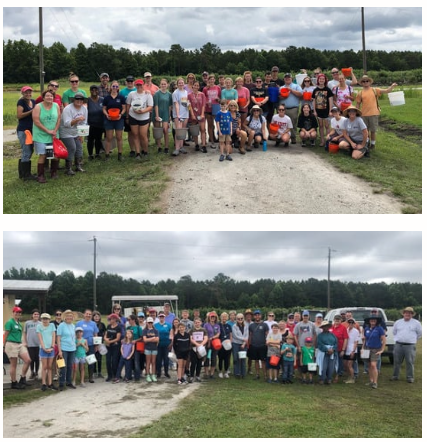
Crop: Apples & Potatoes
Partners: Henderson County NCCE Staff, Mountain Horticulture Crops & Research Extension Center, North River Farms, Blue Ridge Community College, Stepp’s Hillcrest Orchard, Henderson County Soil and Water, Tri-Hishtil, Henderson County Public Schools, Society of St. Andrews, Pryor Family Apple Farm, 4-H members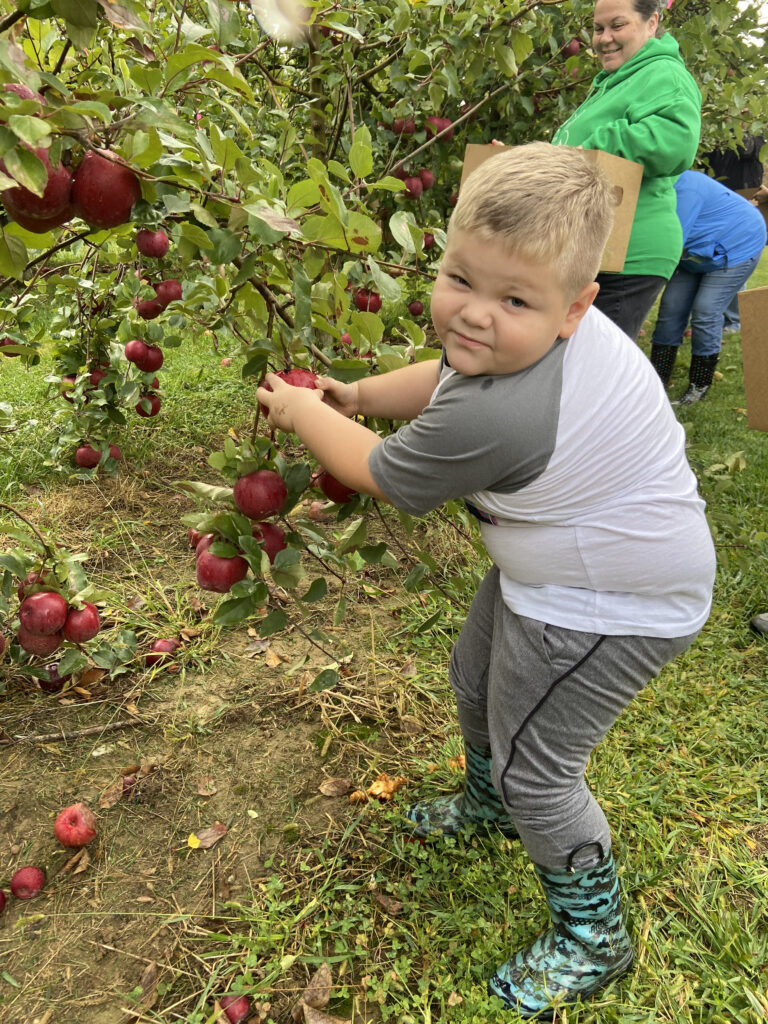
How did the initial project start:
Henderson County grows 85% of the apples in NC with sales over $31 million. Although agriculture is a large part of Henderson County, teachers expressed that many of the school-aged youth did not understand farm operations or have never been on a farm. NCCE staff collaborated with the Mountain Horticulture Crops & Research Extension Center, North River Farms, Blue Ridge Community College, Stepp’s Hillcrest Orchard, Soil & Water, Tri-Hishtil, and Henderson County Public Schools to provide agriculture tours and gleaning opportunities for middle school students. The goal was to connect youth directly to a crop they would see at the grocery store, from beginning to end. They worked with the Society of St Andrew to teach the youth about gleaning and food insecurity and then distributed the gleaned produce. After a few years of school tours, North River Farms and the Society of St Andrew asked if a 4-H Club would be interested in planting potatoes as a community service project which then grew into a Hands to Service community service project for all Henderson County 4-H’ers and Clubs. Several hundred pounds of potatoes were planted in Spring 2022 and participants returned in Fall 2022 for the gleaning event.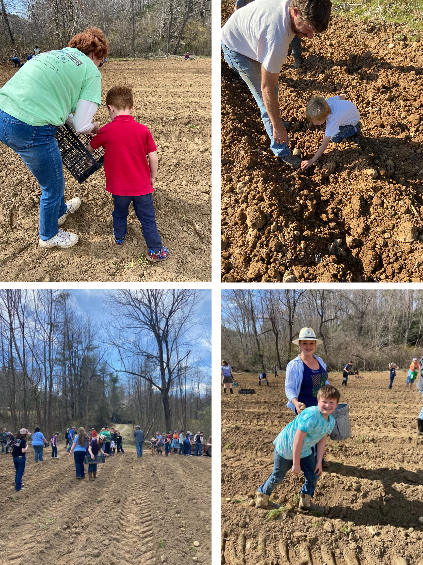 The apple gleaning project began as a 4-H County Council initiative, as part of the requirement is to work together to create a community service opportunity for the county to do collectively. 4-H members had a connection with a 4-H family that grows apples locally and arranged the gleaning event.
The apple gleaning project began as a 4-H County Council initiative, as part of the requirement is to work together to create a community service opportunity for the county to do collectively. 4-H members had a connection with a 4-H family that grows apples locally and arranged the gleaning event.
The Gleaning Impact:
Over 2000 pounds of potatoes were gleaned and distributed to food insecure individuals by the Society of St. Andrews. Just over 75 bushels of apples were picked and distributed the same day to citizens of Charlotte who have little access to fresh produce.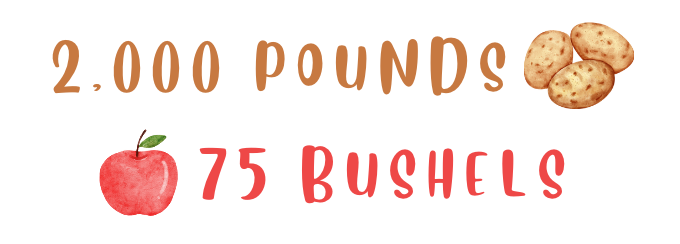 Advice for other counties who may be interested in hosting their own gleaning event:
Advice for other counties who may be interested in hosting their own gleaning event:
“I will preface by saying Henderson County is very blessed to have the community we do. The generosity and willingness of our local producers to partner with 4-H and/or Extension is amazing. And, we have pretty amazing 4-H families. Do not be intimidated to ask about farmers’ interest in these types of endeavors and be prepared to answer questions and have a plan in place before asking. The plan you have may change, and that is okay! But sometimes coming up with a feasible solution and action plan, gets the gears going a lot quicker. Relying on your 4-H parents or teens can also be that connection too. I would also suggest reaching out to your local Society of St. Andrew because they have their own volunteer base and connections with food banks.”
–Hannah Peeler, 4-H Youth Development Agent, Henderson County Center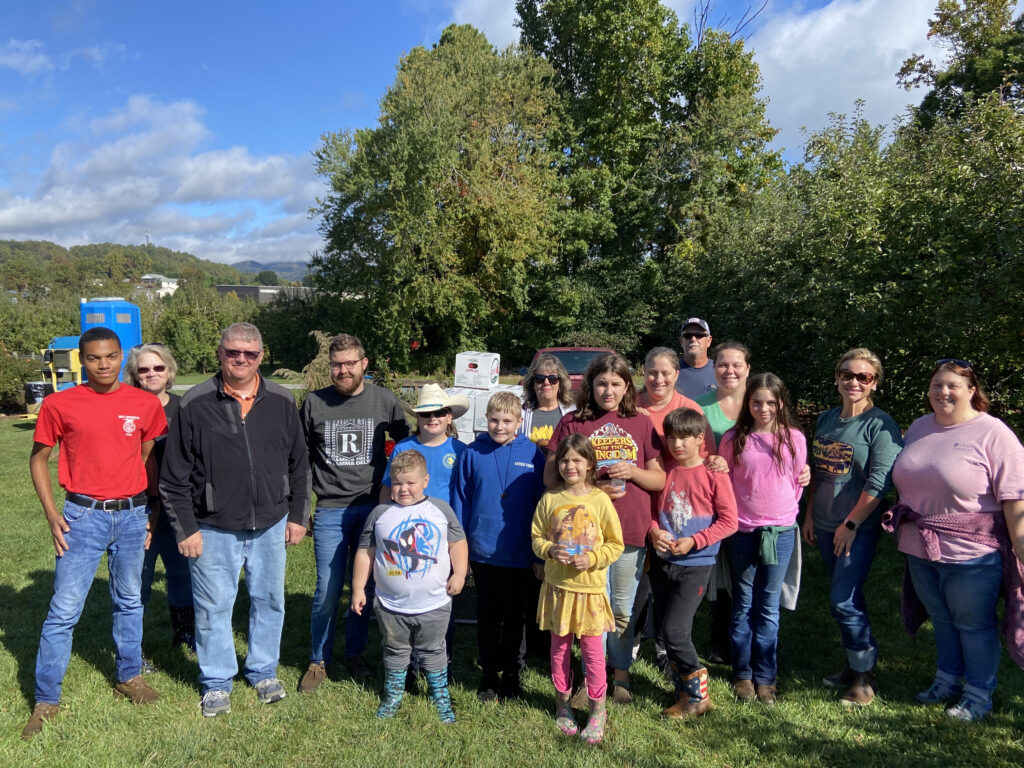
You can find more information at the NC Gleaning publication.





